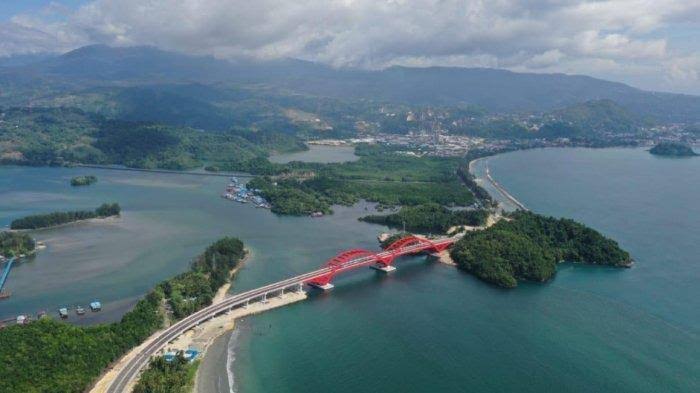Infrastructure Development in Papua Accelerates Inter-Regional Connectivity and Economic Equality
By: Nelson Wamuar *)
Since being inaugurated as President of Indonesia in 2014, Joko Widodo (Jokowi) has placed infrastructure development as a main pillar in his government’s policies. Indonesia, as an archipelagic country with a very large territory, faces a major challenge in ensuring equal distribution of infrastructure across all regions. Jokowi’s focus from the start has been on building physical and digital connectivity to accelerate economic growth, reduce disparities between regions, and improve the welfare of people throughout the country.
In Papua, special attention to infrastructure development is part of Jokowi’s grand agenda to strengthen connectivity between regions and ensure economic equality. Major projects, such as the Trans Papua Road and the construction of airports and ports, are concrete evidence of this commitment. These projects aim to open up access to previously isolated remote areas, allowing for faster and more efficient distribution of goods, services and people.
One of the monumental projects that has attracted attention in Papua is the construction of the Trans Papua Road. This road is built along more than 4,300 kilometers and connects various important areas in Papua, including Sorong and Merauke. In addition to accelerating inter-city and inter-regional access, this road is also expected to increase the flow of goods and services, reduce logistics costs, and encourage local economic growth.
In several of his speeches, Jokowi emphasized the importance of building toll roads, bridges, and digital infrastructure to support regional connectivity. At the celebration of the 79th Anniversary of the Republic of Indonesia, Jokowi explained that the government had succeeded in building 366 thousand kilometers of village roads, 1.9 million meters of village bridges, 2,700 kilometers of new toll roads, and 6,000 kilometers of national roads. In addition, there are 50 new ports and airports as well as 43 dams and 1.1 million hectares of irrigation networks that have also been successfully realized. Thanks to this infrastructure, logistics costs have been reduced from 24 percent to 14 percent, and Indonesia’s competitiveness ranking has increased from 44th to 27th in 2024.
In addition to highways, the construction of bridges and ports is also part of Jokowi’s major program. One of the iconic projects in Papua is the Holtekamp Bridge, which was inaugurated in 2019. This bridge connects Jayapura City with the coastal area, shortening travel time from several hours to just a few minutes. The impact is very noticeable, especially in driving economic growth in the coastal areas of Papua.
In addition, the construction of PLBN in the Papua region also provides many benefits for the Papuan people. Deputy for Regional Development and Spatial Planning of the Coordinating Ministry for Economic Affairs, Susiwijono Moegiarso explained that the PLBN built during President Jokowi’s administration has proven to be able to boost the local economy. For example, the Skouw Wutung PLBN in Jayapura, in the first quarter of 2024, has successfully recorded trade (exports) of IDR 12.68 billion.
In addition to physical infrastructure, the Jokowi era is also marked by the development of digital infrastructure. The Palapa Ring program, which connects all of Indonesia through a fiber optic network, is one of the flagship projects aimed at expanding internet access to remote areas. In Papua, this program is complemented by the construction of thousands of 4G Base Transceiver Stations (BTS) which ensure that all Papuans can connect to the internet network.
By the end of 2023, the government has completed 4,990 4G BTS from the target of 5,618 BTS, spread across remote areas of Indonesia, including Papua. With a better telecommunications network, Papuans can now connect to national and international markets. This internet access opens up new economic opportunities, especially for small and medium enterprises (SMEs) and the creative sector, so that the digital economy can grow faster.
The massive infrastructure development carried out by the Jokowi government has not only had a positive impact in terms of mobility and economic access, but has also created significant social effects. With the opening of access to roads, airports, and ports, the Papuan people can now enjoy more affordable prices for basic necessities. Adequate infrastructure also opens up new job opportunities, encourages investment, and improves the tourism and agricultural sectors in previously isolated areas.
Senior economist from CORE Indonesia, Ina Primiana, explained that the massive development of physical and digital infrastructure is part of the effort to realize the vision of Golden Indonesia 2045. Although infrastructure development is very important, Ina also emphasized that there needs to be integration between infrastructure development and the development of productive economic sectors in the regions. According to her, the biggest challenge is to ensure that this development truly provides benefits for the entire community, not just for residents of big cities or those who already have access to technology.
Infrastructure development in Papua under Jokowi’s administration has had a major impact on accelerating inter-regional connectivity and economic equality. With the opening of land, sea, and air access, Papua now has much greater potential to grow into one of Indonesia’s new economic centers. High appreciation is due to President Jokowi for his commitment to developing Papua, which reflects real support for regions that have so far been isolated. Jokowi has succeeded in building a foundation for a more prosperous and well-connected future for Papua, in line with Indonesia’s grand vision towards 2045.
*) Papuan youth who are members of the Melanesian Forum
